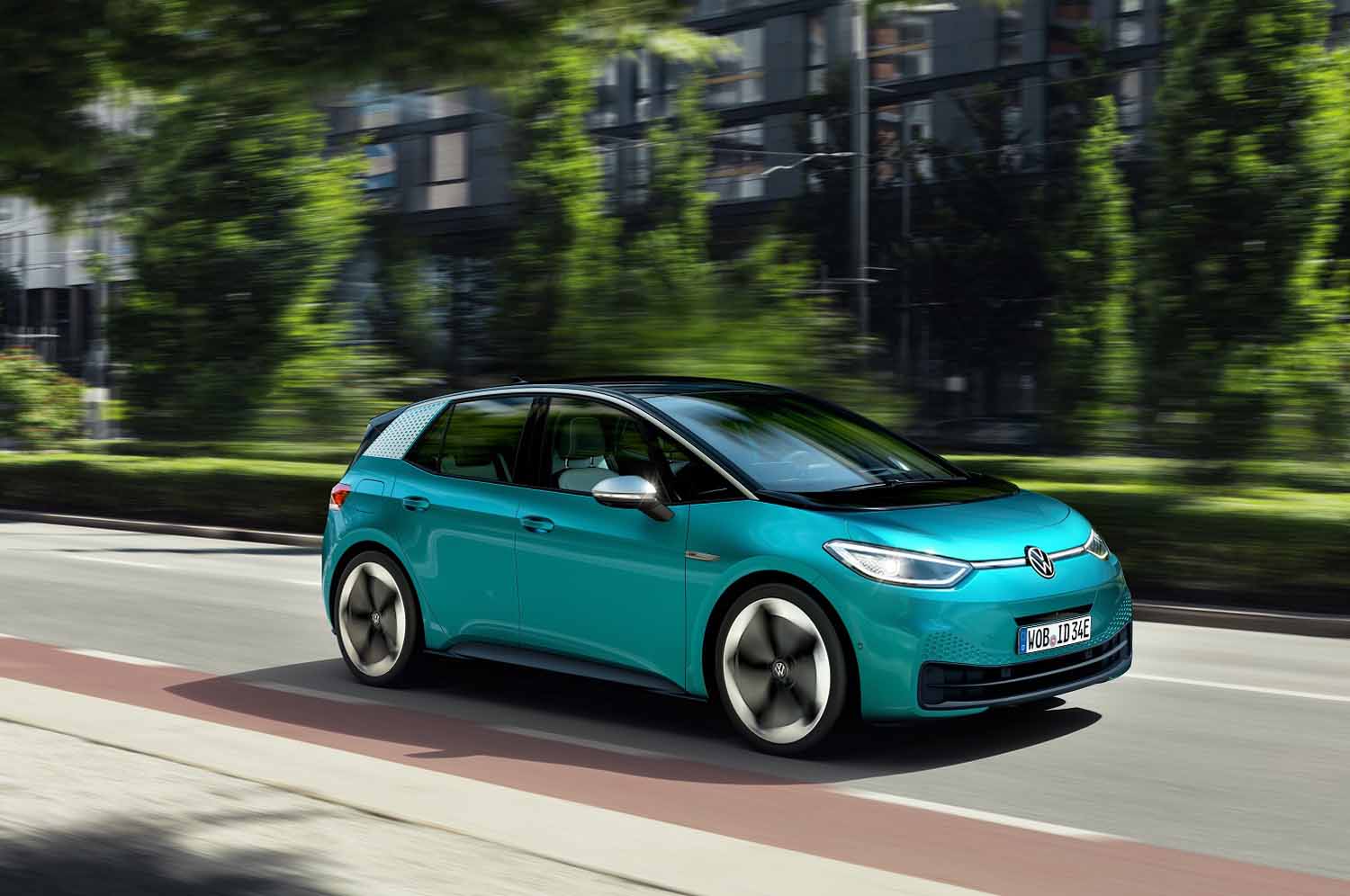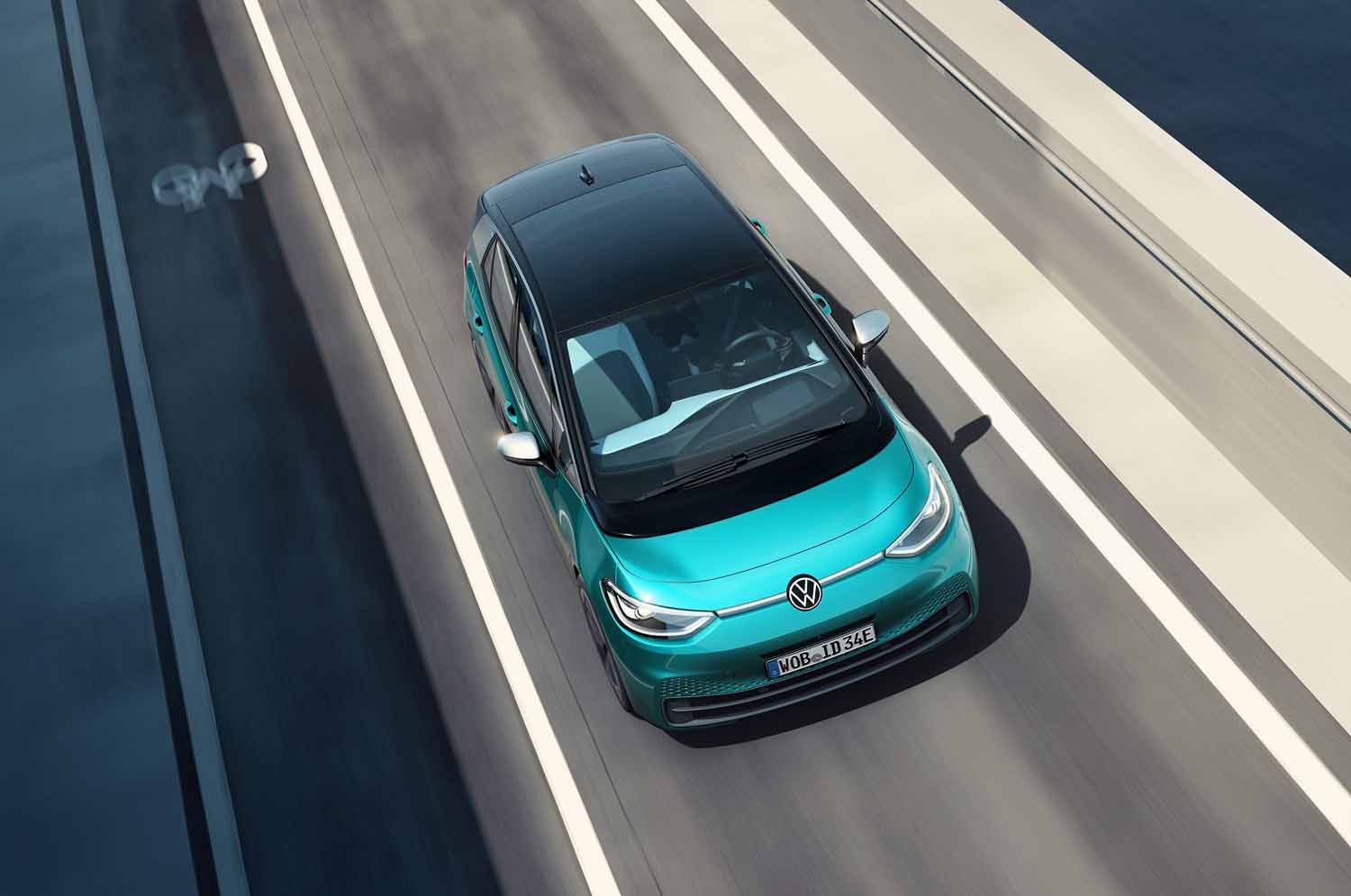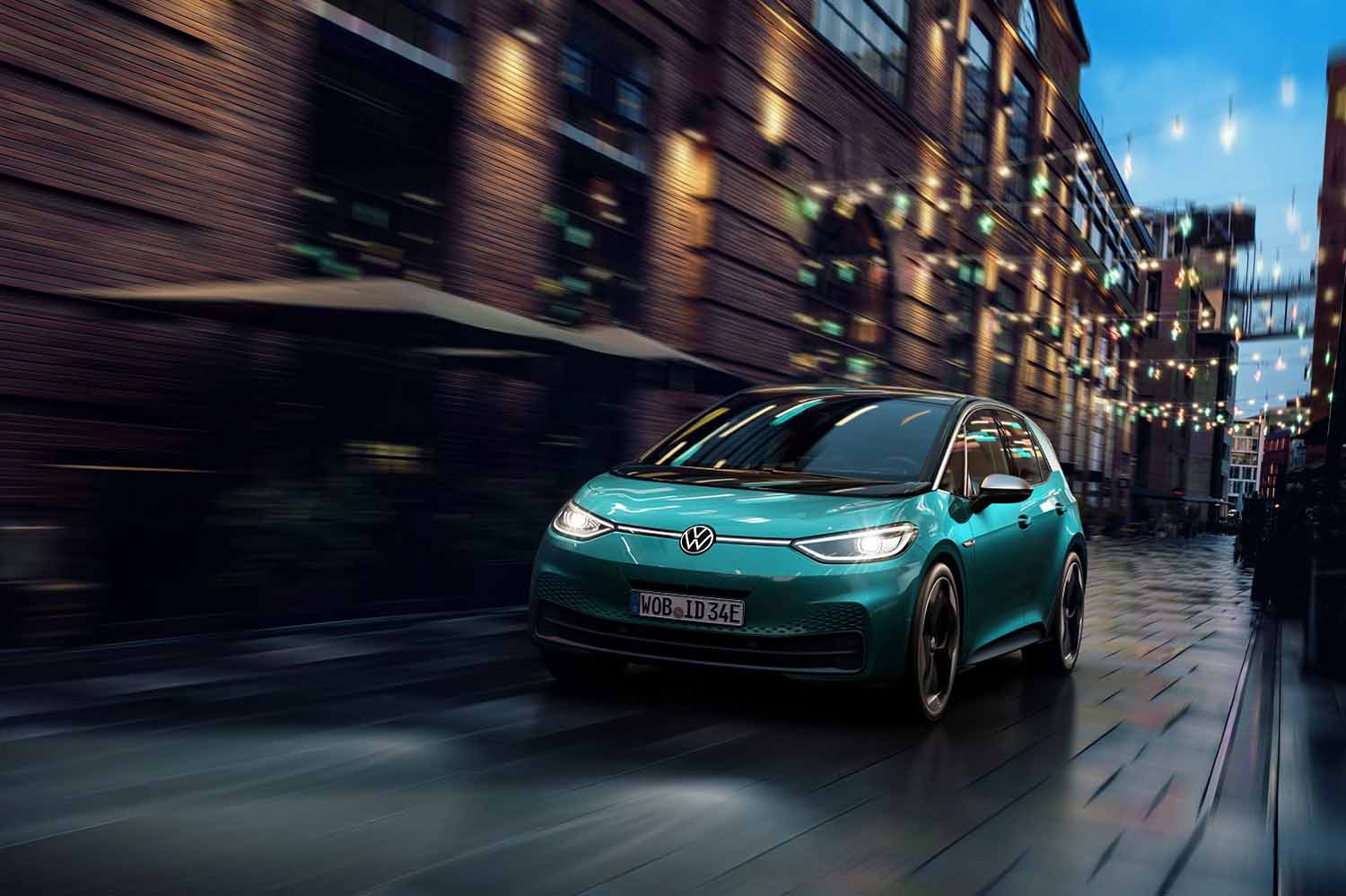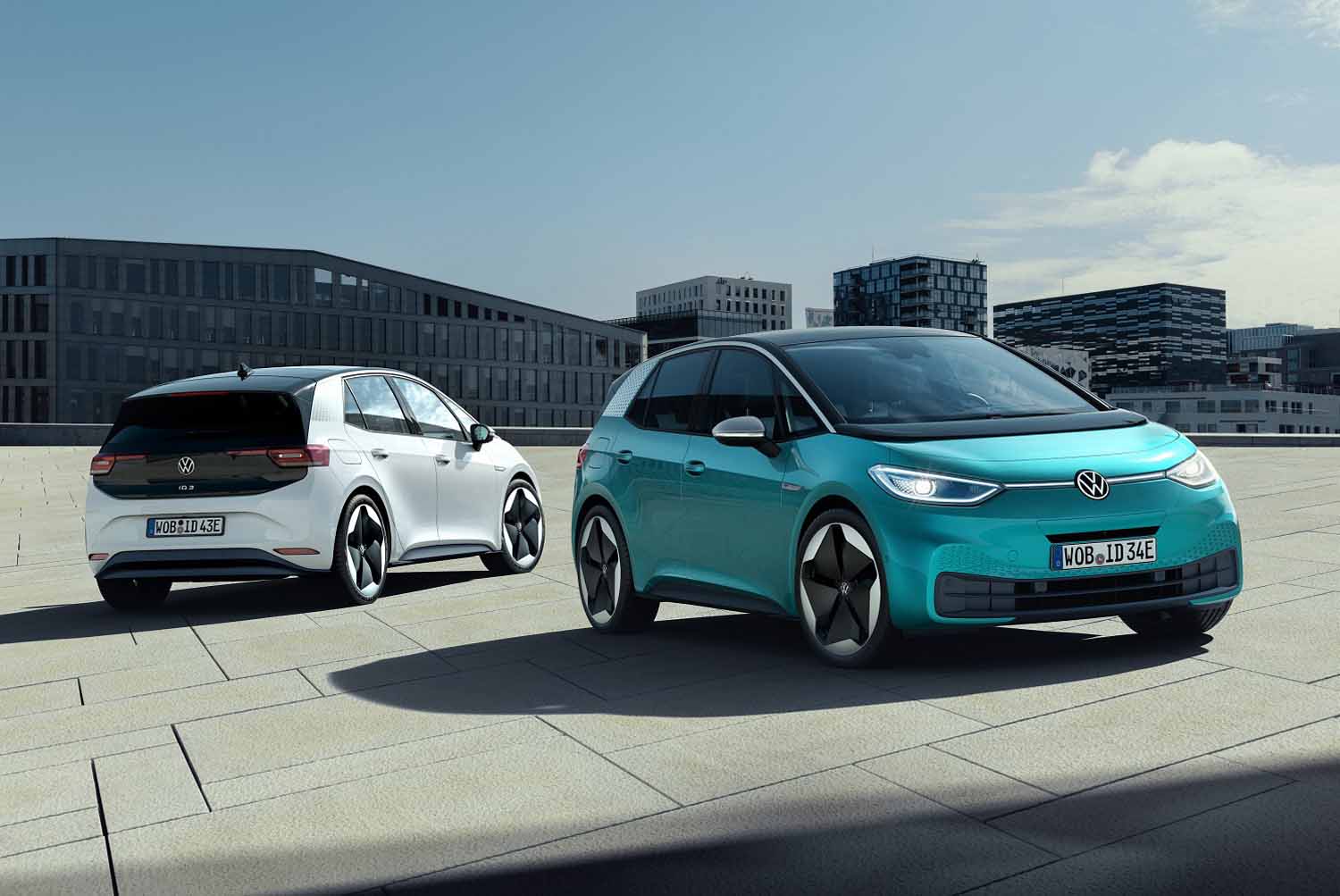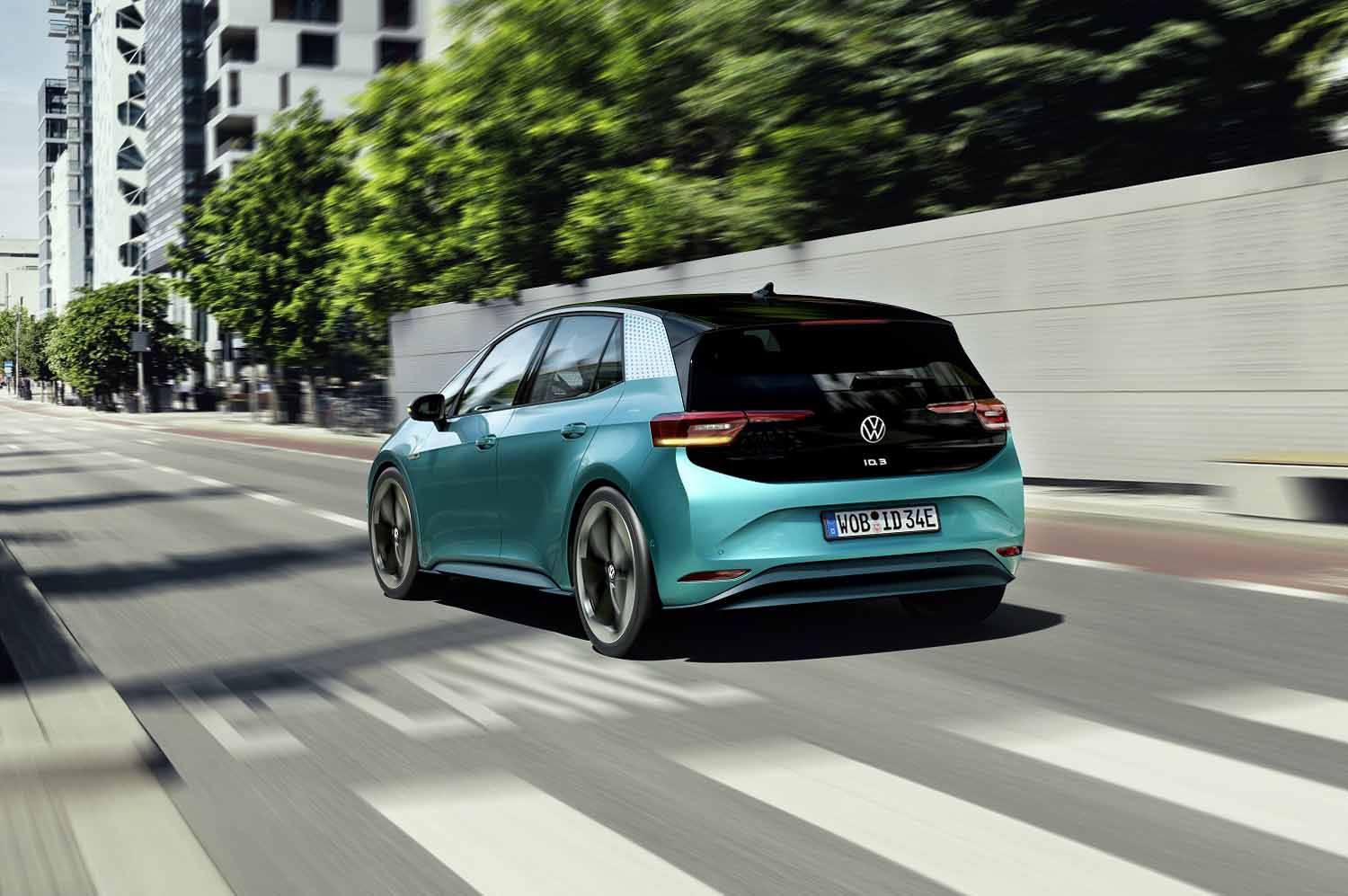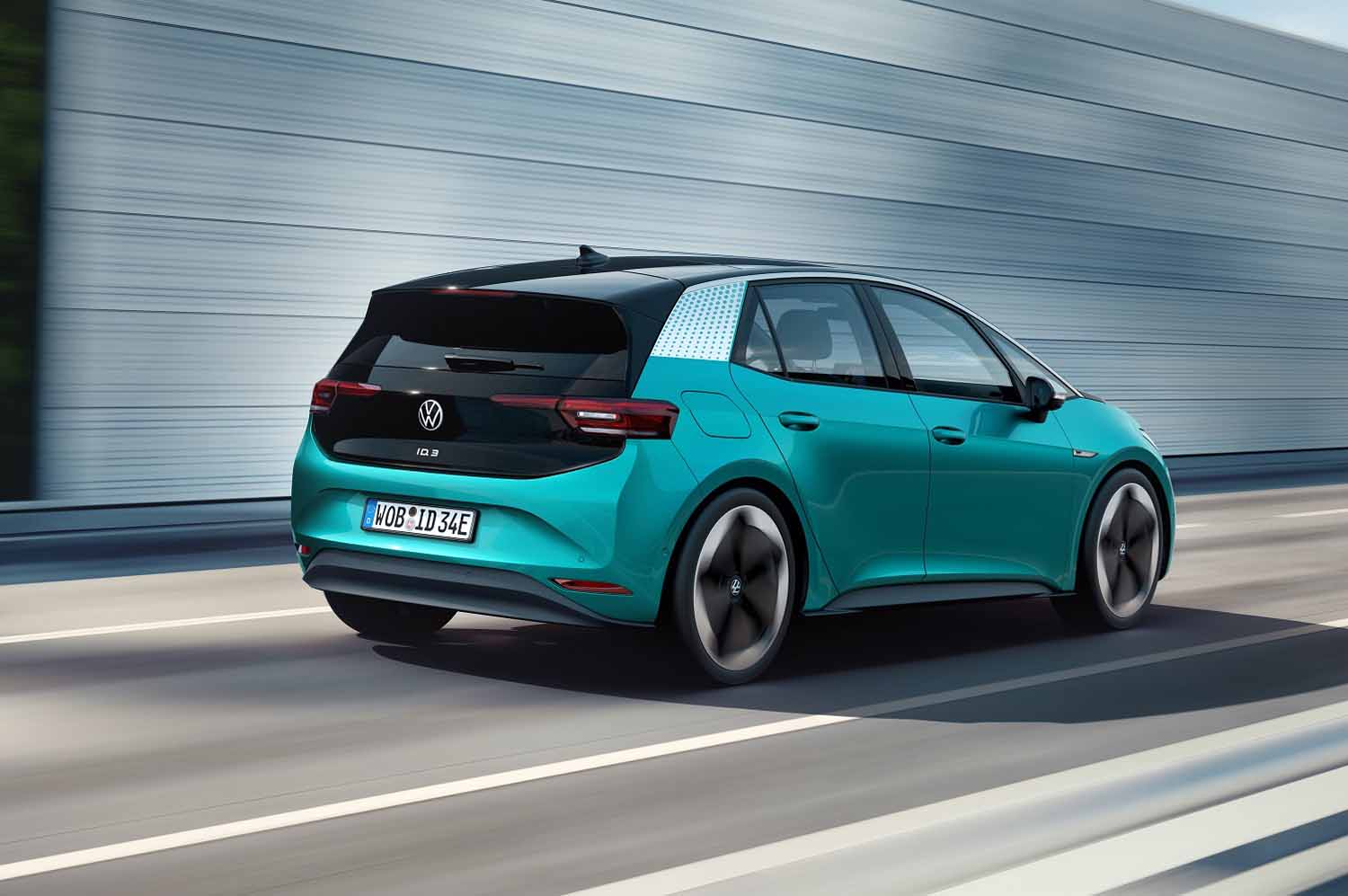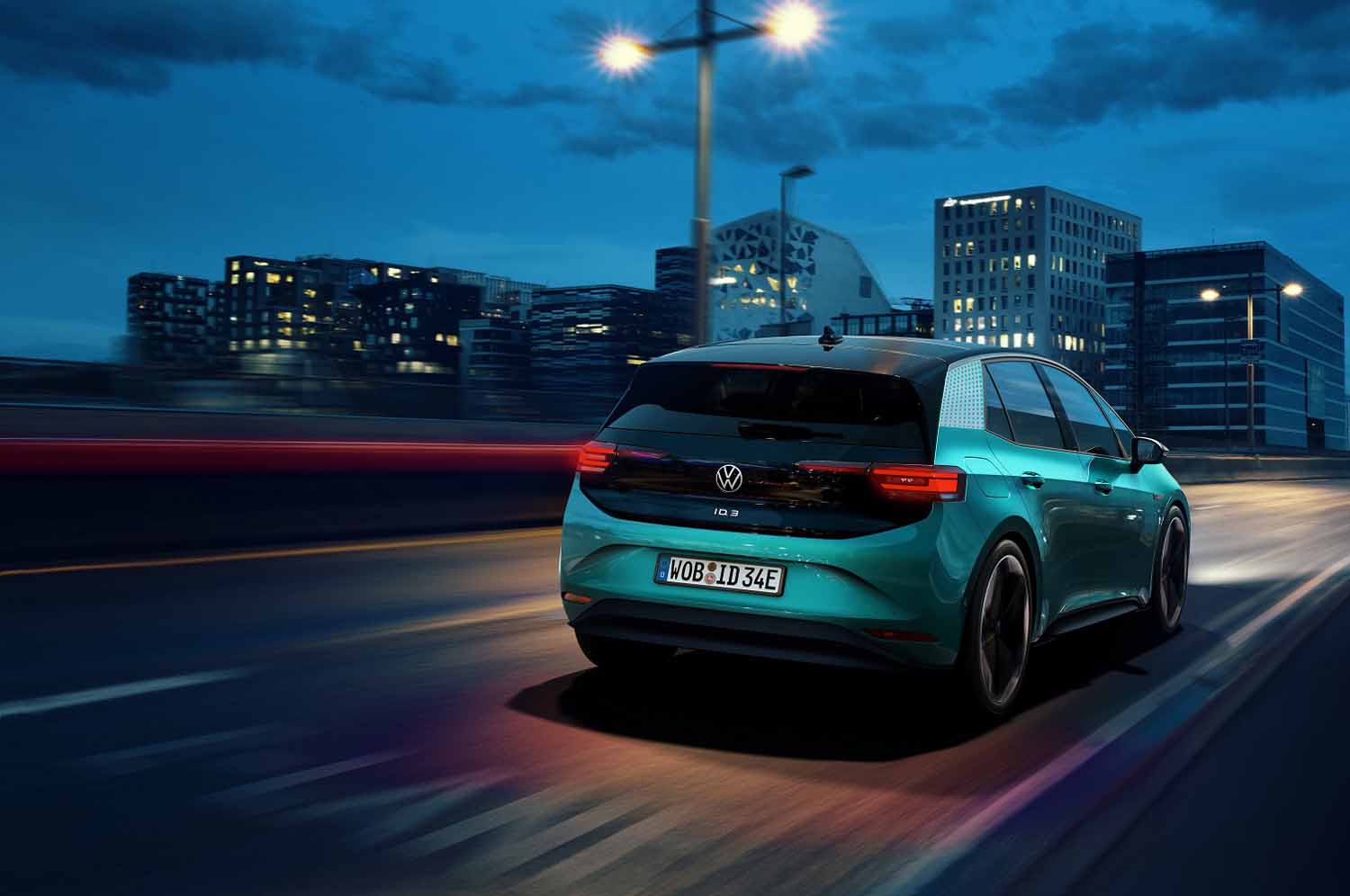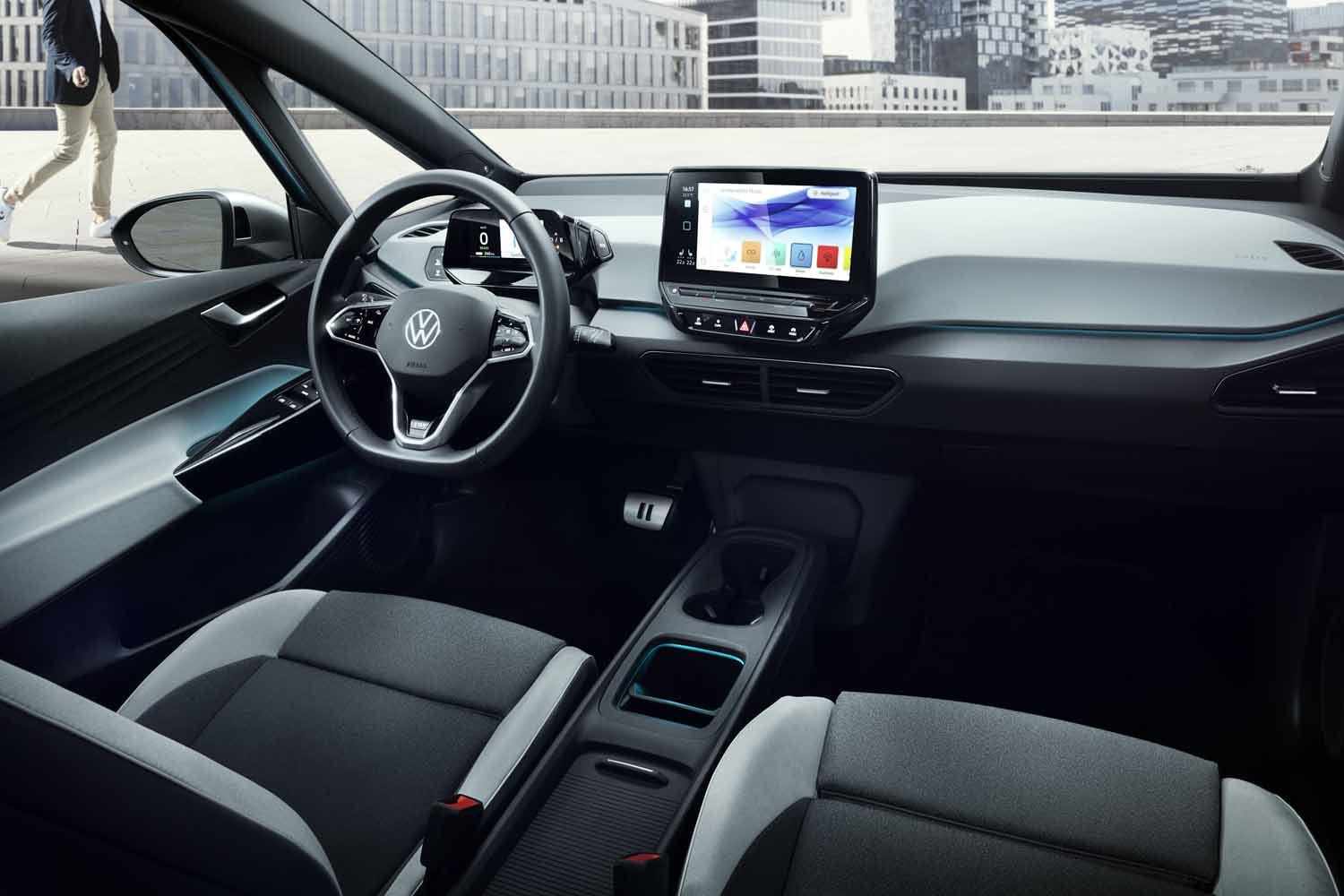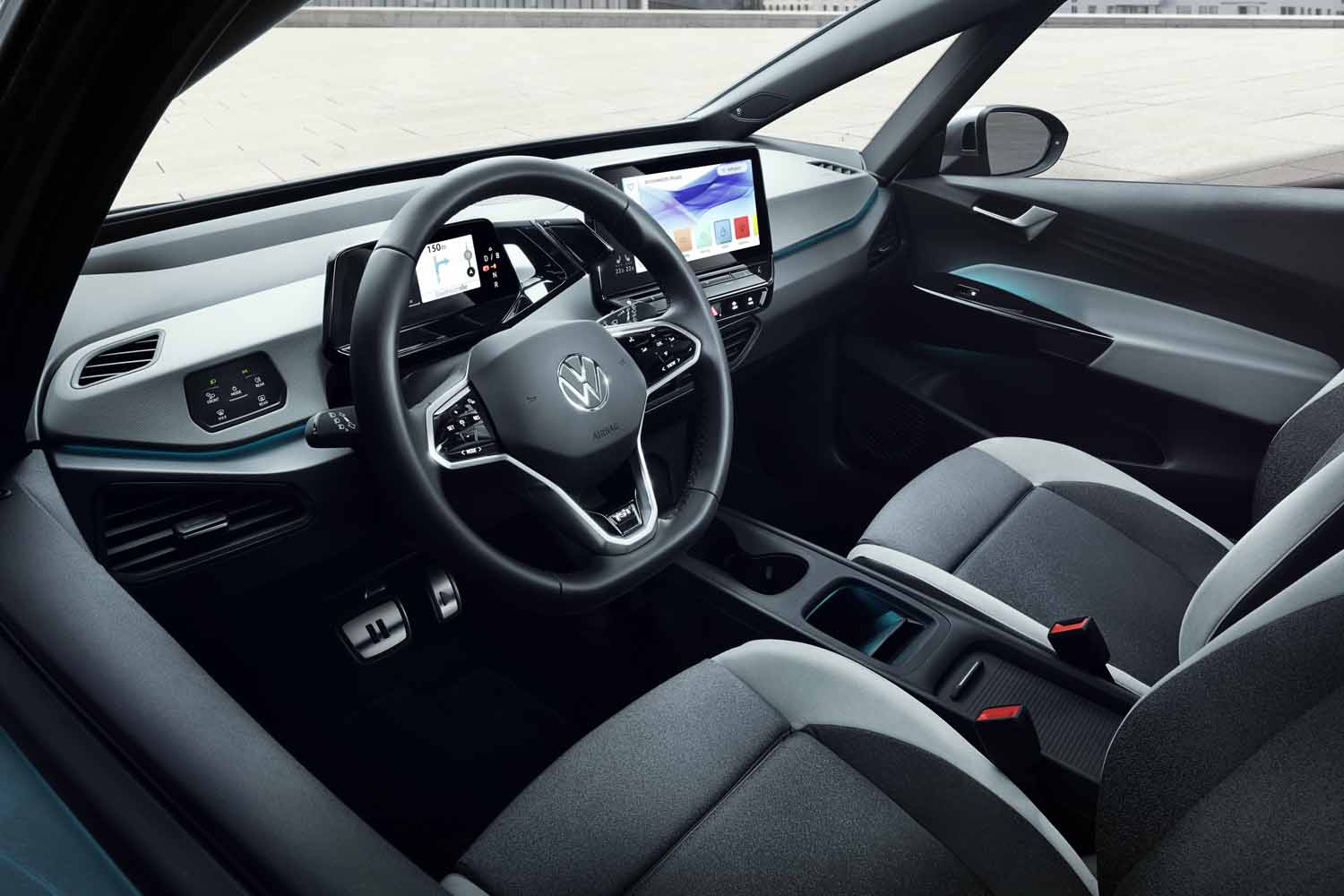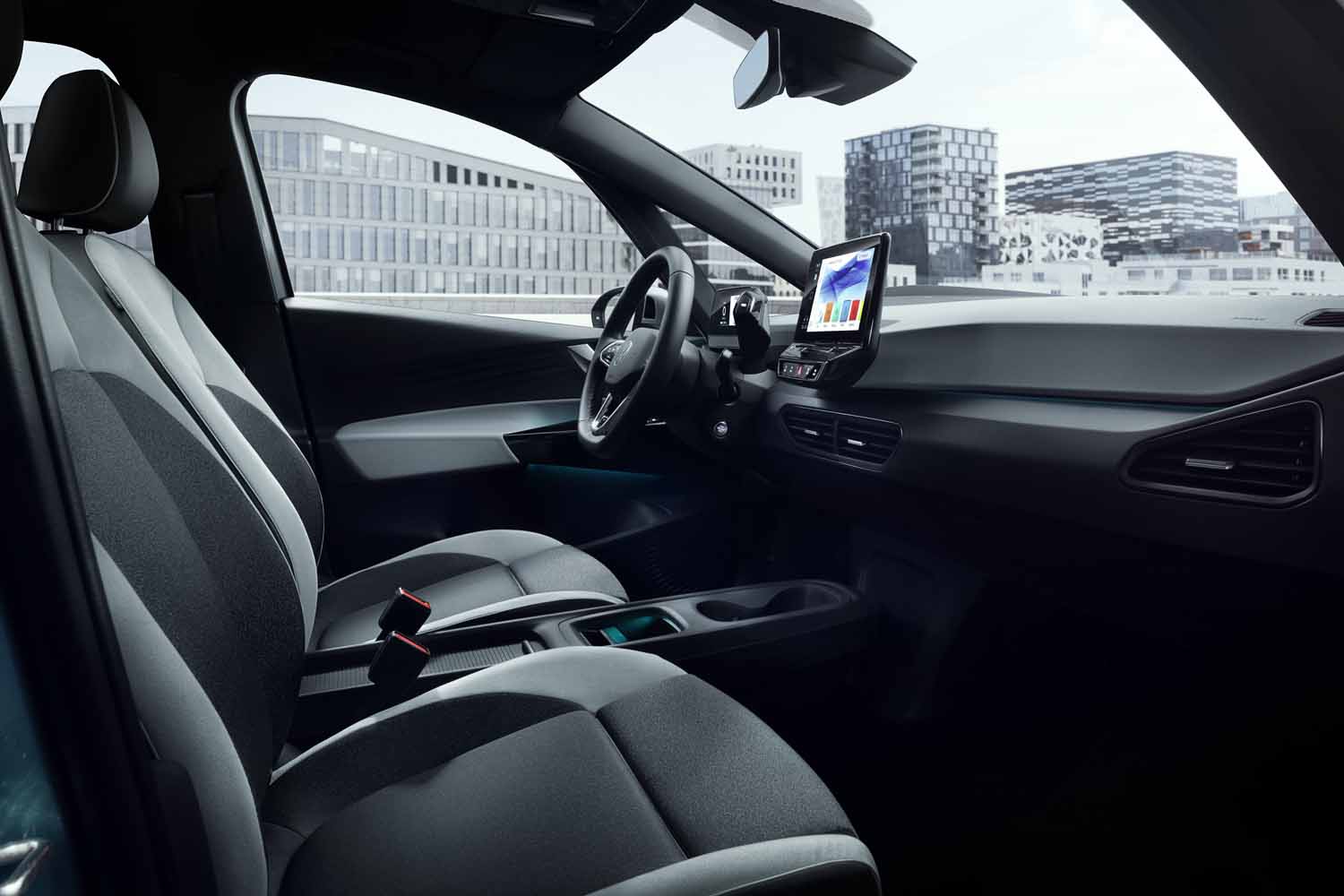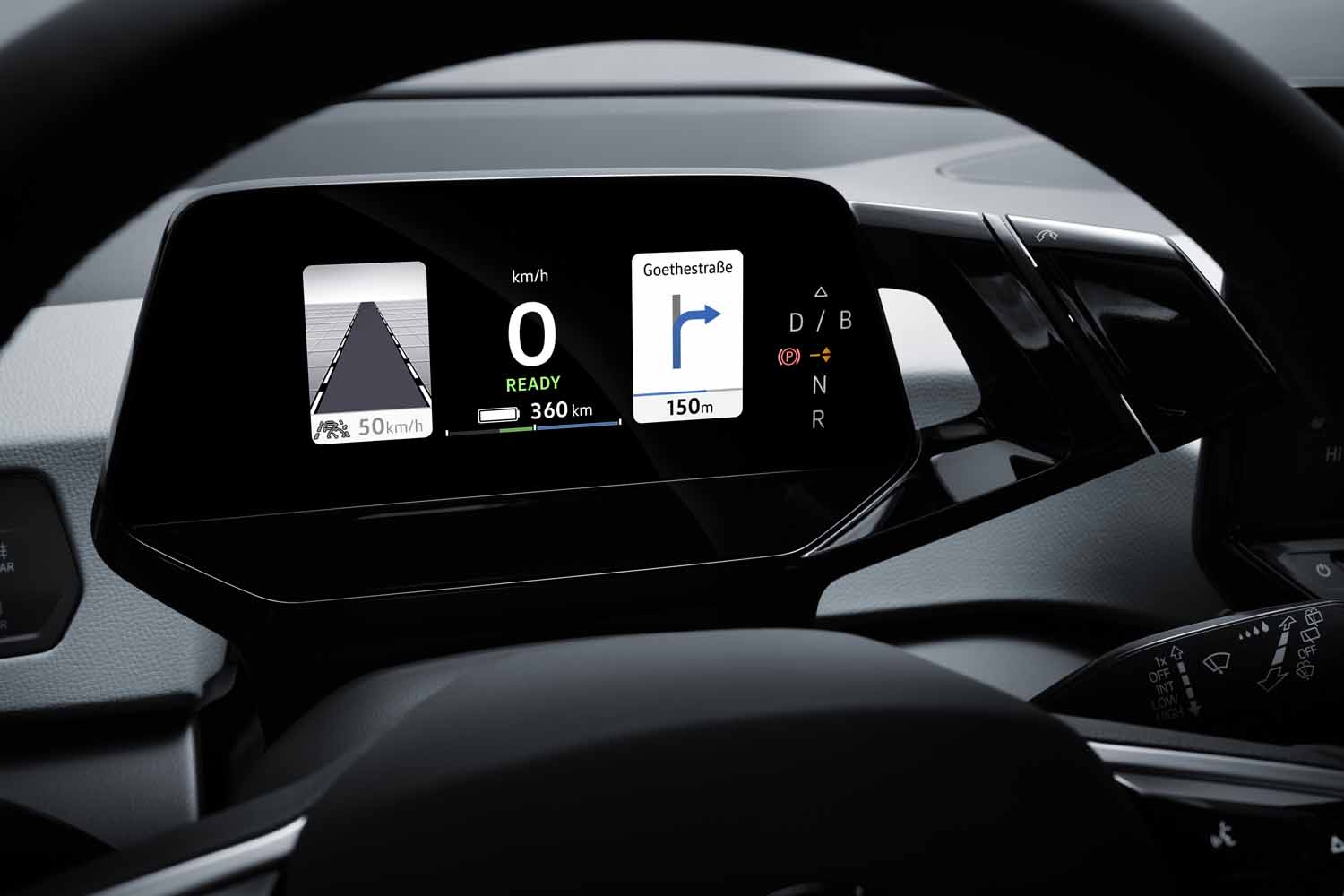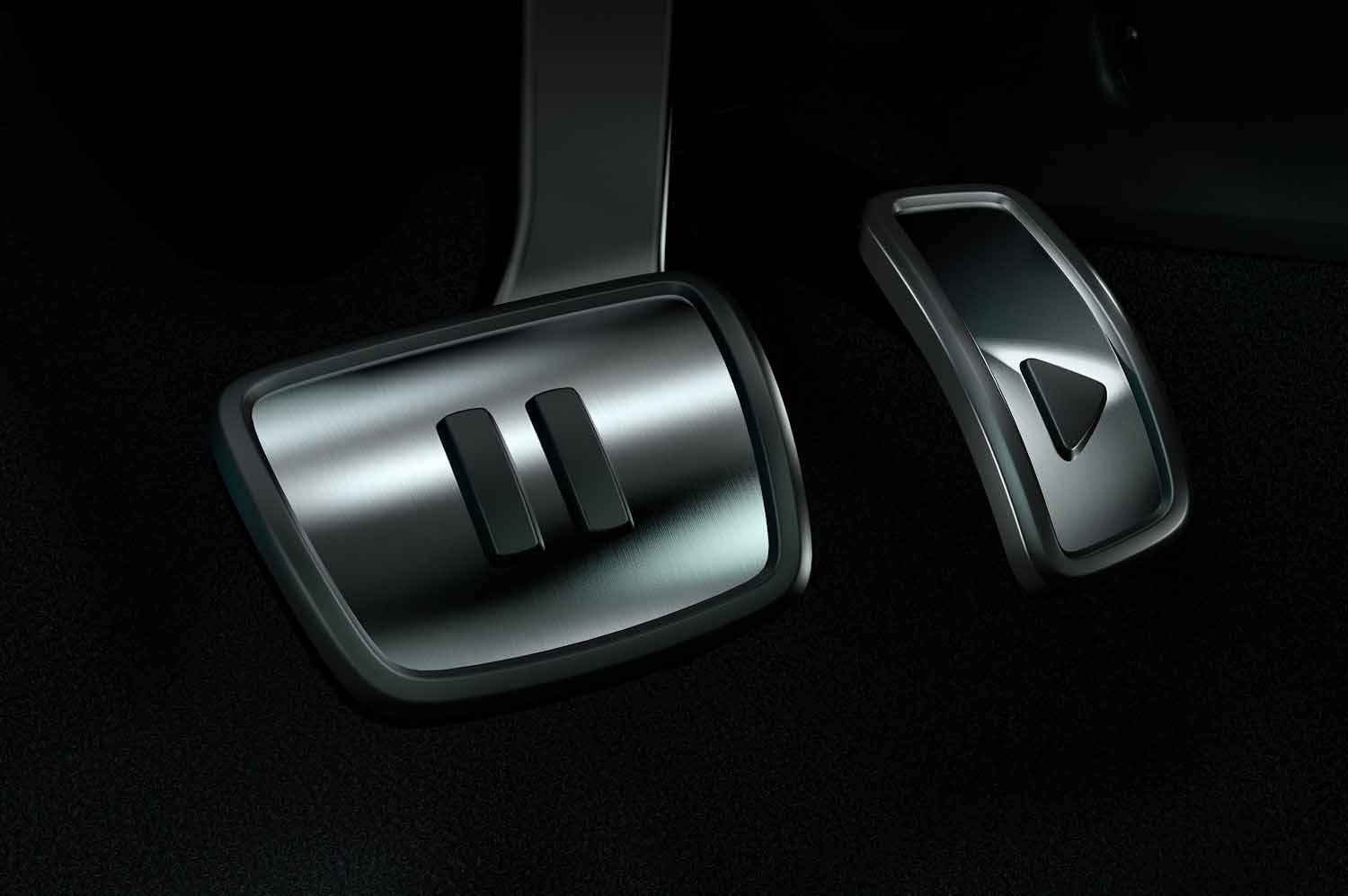The electric ID concept Volkswagen introduced during the 2016 Paris Auto Show has reached production as the ID.3. The Golf-sized, battery-powered hatchback is new inside and out, and was introduced at the Frankfurt Auto Show. The first car built on the company’s modular MEB platform, it inaugurates a gorgeous infotainment system and is the first member of the burgeoning ID family.
Volkswagen’s marketing department chose the name 3 for two reasons. First, it signals that the car competes in the compact segment (the third-smallest in the industry). Second, and more importantly, the name clearly positions the ID.3 as the third chapter in Volkswagen’s history. The first was the rear-engined Beetle, which established the foundations the brand is built on today. The second was the original Golf, which propelled the firm into the modern era and played a significant role in transforming it into the giant it has become. The ID.3 is just as significant: The underlying message is that Volkswagen confidently believes the model will represent a new beginning. It even wears a new version of the Volkswagen logo.
It’s not just a different kind of Volkswagen — it’s a different kind of electric car. “Ranges that were too short, charging times that were too long, vehicles that were too expensive, and often unattractive — these were the main reasons why many car customers have decided not to purchase an electric car to date,” Volkswagen board member Jürgen Stackmann explained. His team set out to right these wrongs.
The ID.3 hasn’t changed significantly in its transition from a concept to a production model. It’s about the same size as a four-door Golf hatchback, but its interior is much more spacious because its electric powertrain takes up less space than a turbocharged four-cylinder engine. The battery is positioned under the floor, and the motor is directly over the rear axle, so everything is out of the way. The ID.3 offers as much space as a car one size up.
The cabin gets a touchscreen-based, internet-connected infotainment system, a driver-configurable digital instrument cluster, and navigation software built specifically for electric cars. The infotainment system is intuitive to use, and the graphics look like they come from the latest smartphone, not from a car. The ID.3 will receive over-the-air updates when appropriate, and it will be permanently connected to the internet. Digital Trends learned the hatchback will be ready for level-three autonomy, meaning it will drive itself in a traffic jam, but it won’t be 100% autonomous.
I’m impressed by the ID.3’s infotainment system. It’s really sharp. pic.twitter.com/Iu9PU34HX7
— Ronan Glon (@EuropeanCarNews) September 10, 2019
Buyers will be asked to choose from three lithium-ion battery packs that deliver up to 205, 260, or 341 miles of range, respectively. Fast-charging technology will zap any of the battery packs with about 160 miles of range in 30 minutes. Rear-wheel drive will come standard, and Volkswagen might offer an all-wheel-drive model by adding a second electric motor over the front axle. It doesn’t take a huge leap of the imagination to picture an ID.3 hot hatch, but nothing is official yet.
Production will begin in late 2019, and the first deliveries are scheduled for the middle of 2020. While the ID.3 will not be sold in the United States, it provides insight into the hardware, software, and technology that will be found in Volkswagen’s subsequent electric cars. Every member of the ID family will notably ride on the same modular platform, called MEB. We won’t have to wait long to find out just how flexible the architecture is, and what Volkswagen has in store for it.
The ID.3 is the first of many electric cars Volkswagen will release in the coming years as part of its ongoing electrification offensive. We’ve seen a lot of them as concept cars before: The ID Buzz, the ID Vizzion, the ID Roomzz, and the ID Crozz concepts unveiled in recent years were all accurate previews of upcoming production models. The ID Buggy we drove in California could also join the portfolio with the help of a third-party company — keep your fingers crossed.
Digital Trends learned that every future member of the ID family will follow the naming structure introduced by the ID.3, meaning we’ll see an ID.4, an ID.5, and so on. Stackmann said Volkswagen will move up before moving down — while a model positioned below the ID.3 is possible, it’s not a priority for the firm.
Updated 9-10-2019: Added full information.
Editors' Recommendations
- Volkswagen ID.4 vs Tesla Model Y
- 2022 Volkswagen ID. Buzz first drive review: The iconic hippie hauler goes electric
- The Volkswagen Bus is back, and this time it’s electric
- 2021 Volkswagen ID.4 AWD first drive review: Gaining traction
- Volkswagen’s electric ID.Life concept car doubles as a gaming console

